High above Los Angeles, in the San Gabriel Mountains, stands the Mount Wilson Observatory at 5,710 feet (1,524 meters). This observatory, built in 1917, was the largest in the world for over 30 years. It was used by famous astronomers, like Edwin Hubble, and important discoveries that have stood the test of time were made at this very spot. For those visiting the Disneyland Resort, the drive to this historic landmark is less than 60 miles away and makes for a very enjoyable day visit.
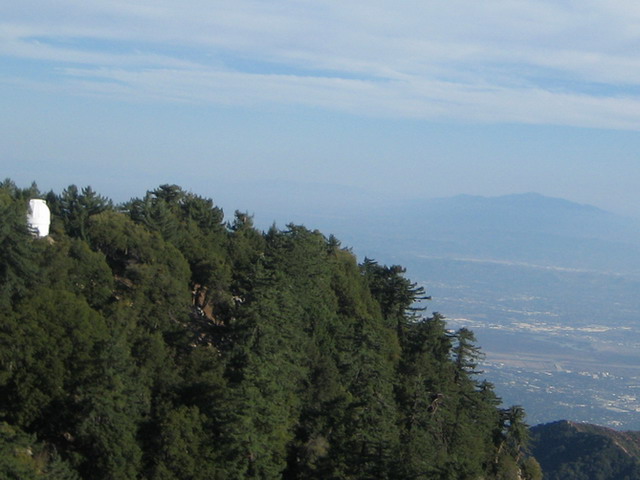
Recently, I drove up to the San Gabriel Mountains to visit some of the picnic areas and campsites we used to go to when I was growing up. Before heading back down the mountain, I decided to drive to Mount Wilson and take a look around. Mount Wilson is the flat peak topped by several antennae that can be seen beyond the skyline of Downtown Los Angeles. I talked about it on our DIS Unplugged Disneyland Podcast, and you can listen to it on our October 25th show.
- Mount Wilson Observatory and Multimedia Antennae high above Los Angeles
When I got to Mount Wilson, I was pleasantly surprised to find the Cosmic Café there. I had a delicious roast beef sandwich and cool water. There was a nice selection of hot and cold sandwiches, simple salads, hot dogs, and other snacks. There was also outdoor seating with a beautiful view of Los Angeles below. I could see the top of the Palos Verdes Peninsula, and in the other direction I saw the Anaheim Hills on the other side of Disneyland. As usual, there was an inversion layer, so the city was hazy. But, I’m surely going to go back during the Santa Ana wind conditions so I can get a clear view of the city.
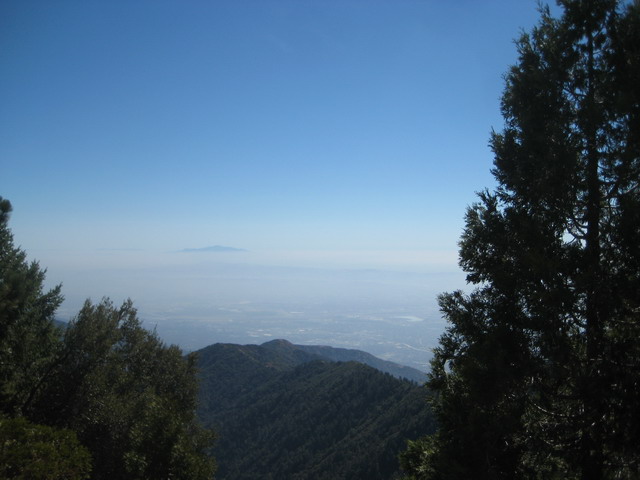
I also am looking forward to seeing the Pacific Ocean as the sun sets. The view must be incredible.
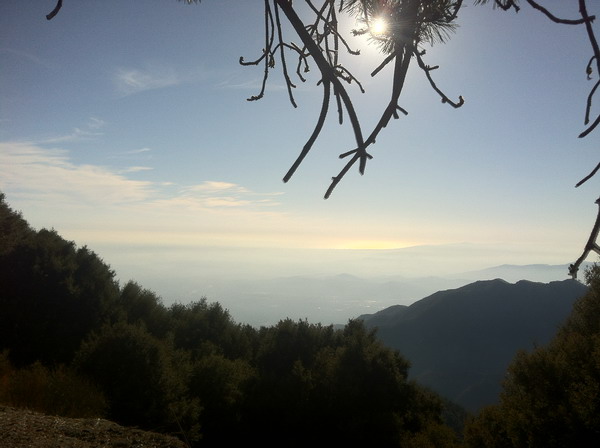
While up at the cafe, I found out that people can walk to the observatory and take a look at the famous 100-inch Hooker telescope from the observation deck. There is also a little museum explaining the history of Mount Wilson and the different observatories. While chatting with the ladies at the cafe, I also found out that on weekends there are tours of the observatory, and one would be starting in just 15 minutes. I thought, “What the heck,” and paid $10 for what turned out to be a very interesting two-hour tour.
This is a view of the cafe from a cool statue representing the constellation Virgo and the sky dragon Qinglong.
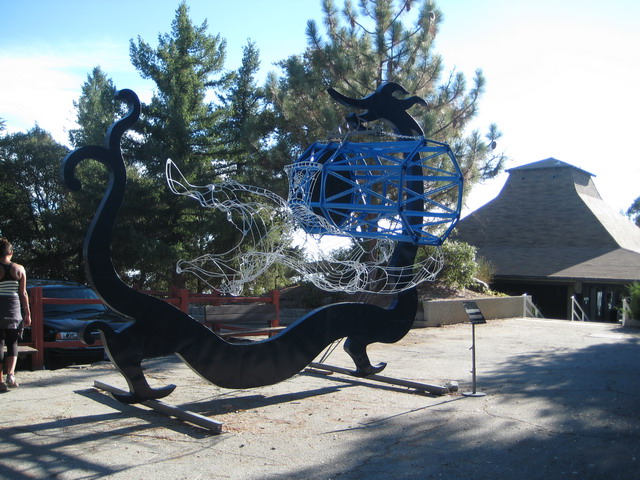
Our docent, Nik, met our group of ten there at Cosmic Café, and gave us a brief history of Mount Wilson. We also got a brief background of the telescopes themselves. Luckily for me, Nik was very knowledgeable about the mountain and the telescopes, was interested in astronomy, and so explained the accomplishments made in terms that I could understand, and he was quite funny. I couldn’t have asked for a better tour guide.
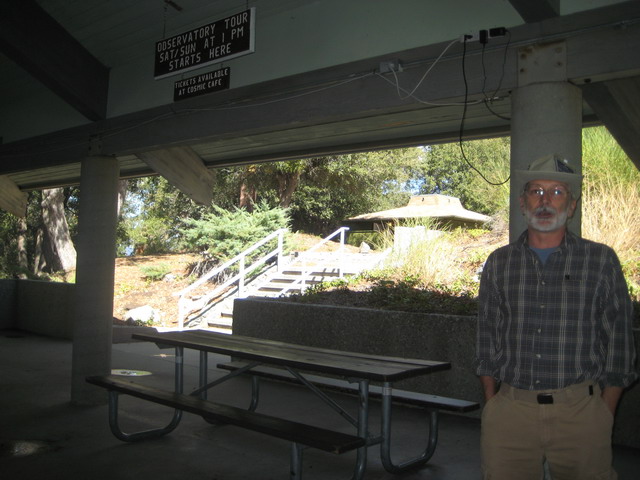
From the cafe, we walked to the observatory, and I learned that there are actually a few observatories up there. The first was built in 1904, and still stands today. There is also a 60-inch telescope that was used to first measure the size of the Milky Way galaxy and our solar system’s location in it. Until 1917, it was the largest telescope in the world, and the lens came all the way from a factory in France. The story of the creation of that lens until it finally came to Mount Wilson was very interesting, and one that Nik recounted very well.
As we walked on the tour, we saw two observatory towers peaking above the trees. We learned that these are solar observatories. The first one, 60-feet tall, was built in 1908 where George Ellery Hale discovered magnetic fields in sunspots. The second one stands at 150-feet tall, and was built in 1910, and was the tallest until 1962. They are still used today.
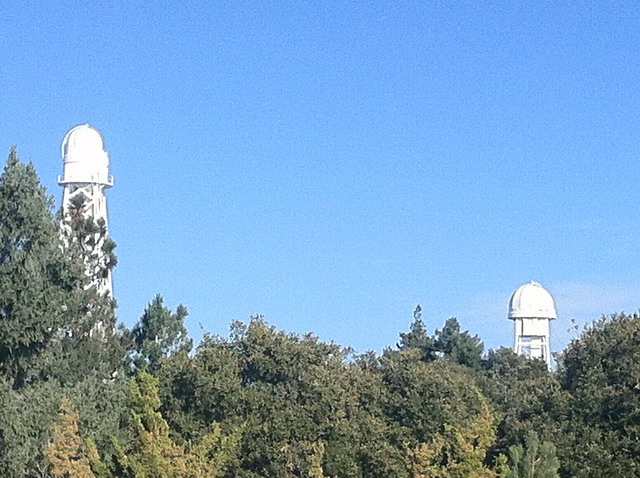
We actually got to go inside the 150-foot solar observatory, and there was an astronomer, Steven, working there. Luckily for us, it became cloudy when we were inside, and he was able to lower the panel used to record sunspots so we could see what was being measured. While inside the tower, we learned about the equipment used to measure the magnetic fields. Astronomers still use a bucket lifted on cables to go to the top of the tower to adjust the sensors.
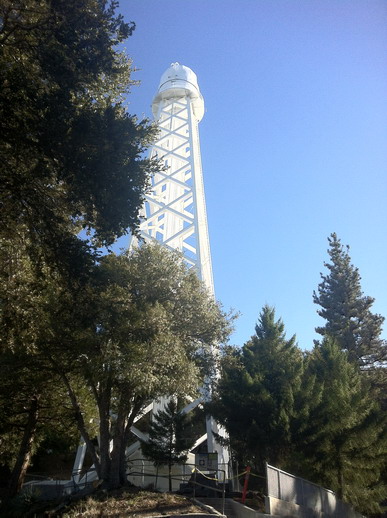
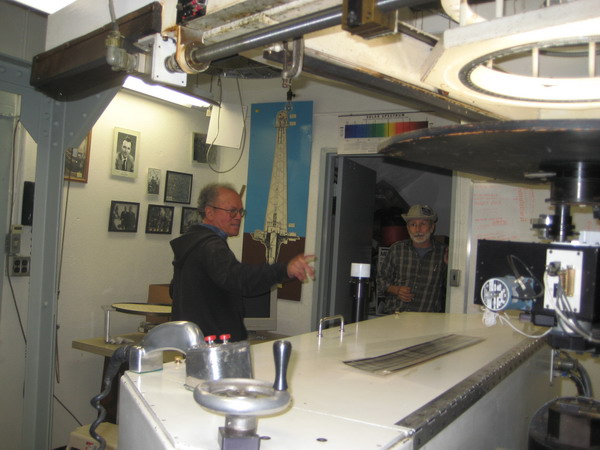
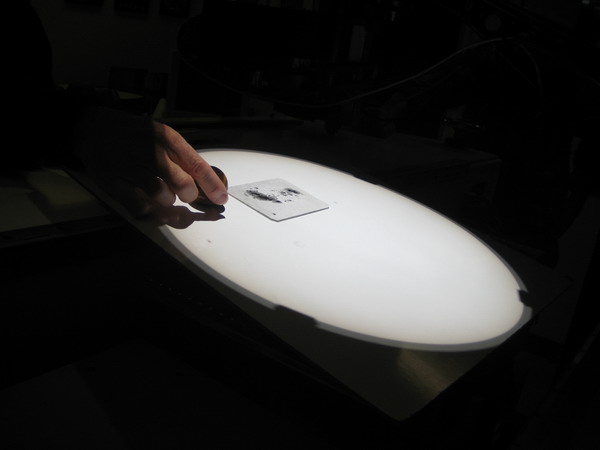
Afterwards, we visited the 60” telescope, which uses a silver-on-glass reflector. This was the largest telescope in the world until 1917, and was used to discover the size of our own galaxy, the Milky Way, and where we are located in it.
We then went to what looked like a smaller observatory, and learned that there are six of these atop Mount Wilson, and they are all connected by vacuum tubes, where photons are carried between all of them. This is called the CHARA array (Center for High Angular Resolution Astronomy), and each dome contains a telescope with a 40” mirror, simulating a 1080’ (that is 1,080-foot) telescope. This is state-of-the art, and is used today. Our docent, Nik, described how these are used together, making it the largest in the world at this time. It is a six-telescope stellar interferometer array.
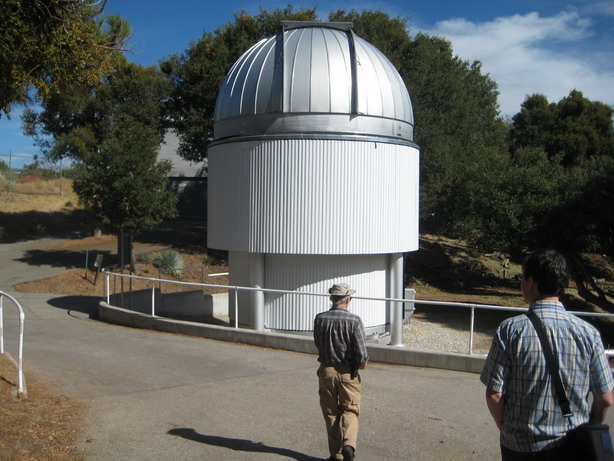
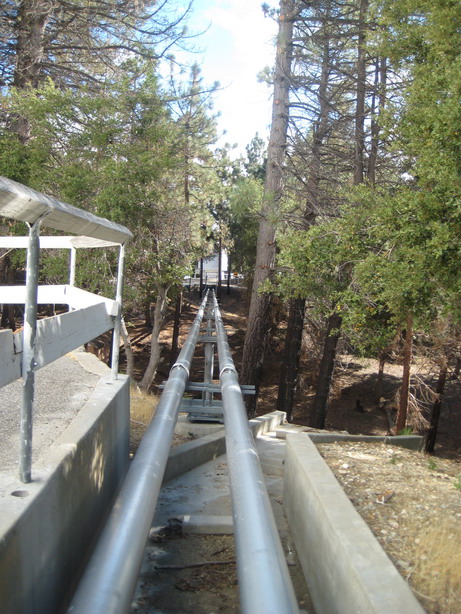
From here we went to the largest observatory dome that houses the famous Hooker telescope. There is an observation deck built on the side of the observatory. Guests can mount the many stairs to the deck, and through a large window gaze upon the telescope while listening to a pre-recorded message describing the history of the telescope and interesting facts about it.
Since we were with Nik, we went one better. We went inside the dome, and climbed several stairs to stand next to the actual telescope. Inside this dome, Nik gave us more details and interesting anecdotes about this telescope. Like I said earlier, Nik has a great sense of humor, and our tour lasted a bit longer than two hours because he had so many stories to tell us, and he had many of us chuckling as he told them to us (most chuckled, but those who know me can probably imagine how I happened to just laugh out loud… but that’s just me).
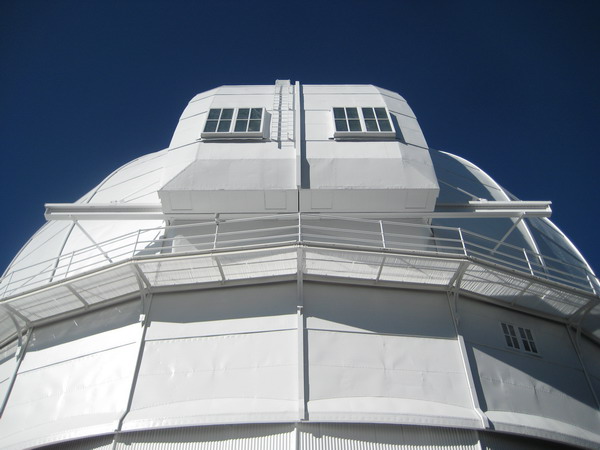
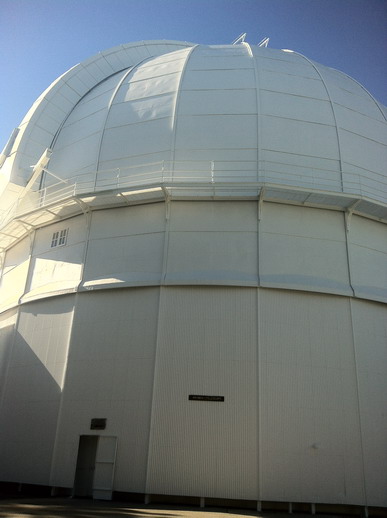
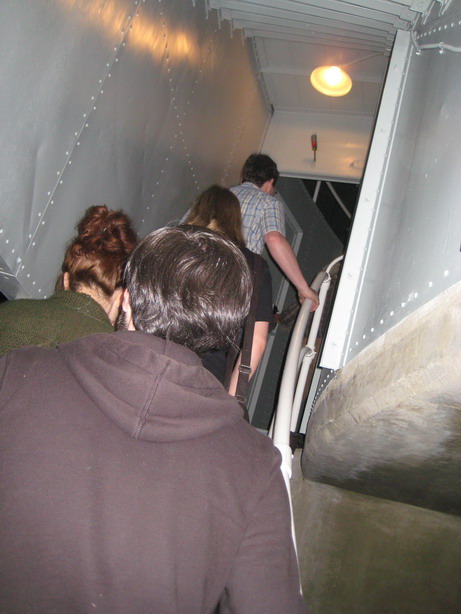
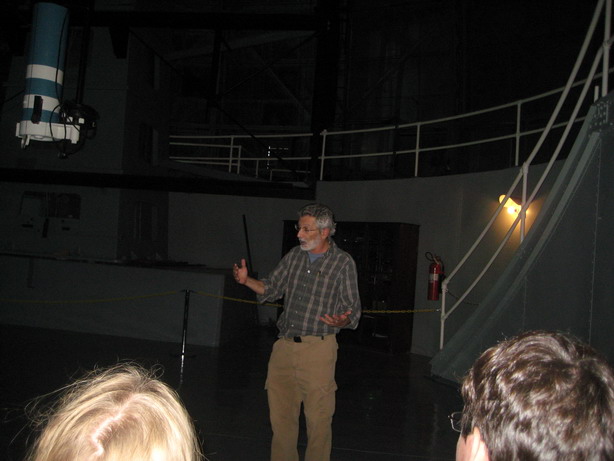
The Hooker Telescope was built in 1917, and was the largest at 100 inches until 1948. Edwin Hubble used this telescope to discover other galaxies, and also to determine that the universe is expanding. There were other discoveries made here that changed how the world understands stars, space, and the universe.
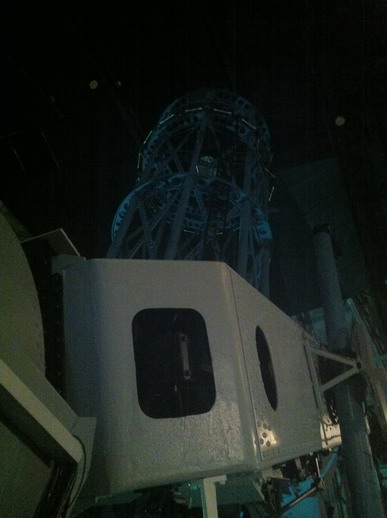
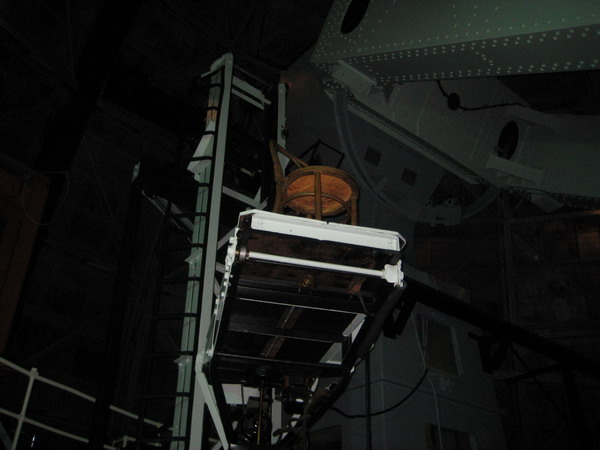
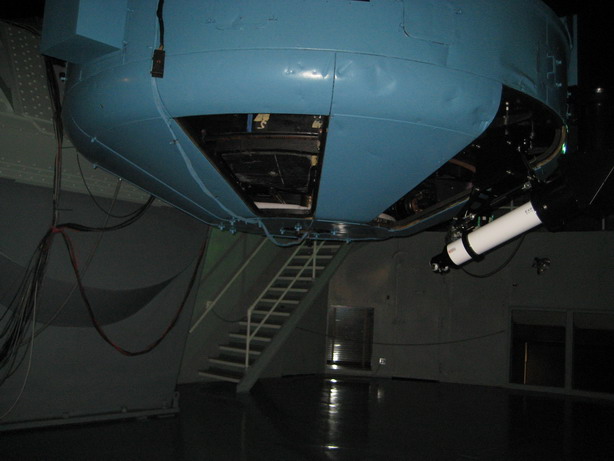
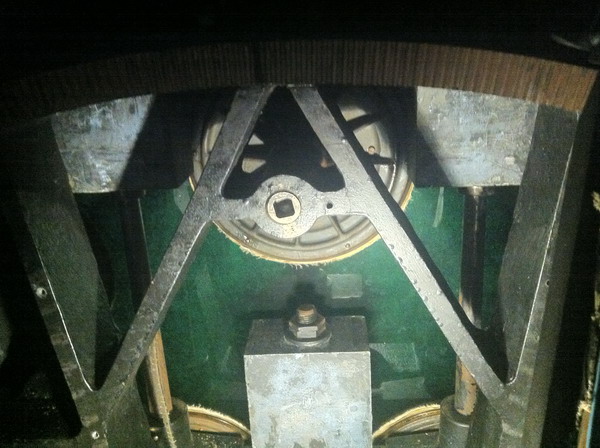
Our guided tour ended after the Hooker telescope. From there we were free to make our own way back to the Cosmic Café, our cars, or the little museum that is up there. I decided to check out the observation deck and the museum.
The observation deck is located on the side of the observatory, and you have to climb several steps to get there (maybe four flights). Use of the observation deck is free of charge to the public, however it is not ADA compliant since it was built so many years ago.
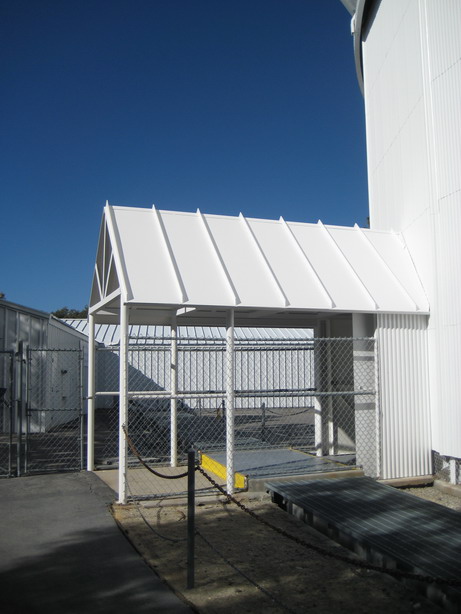
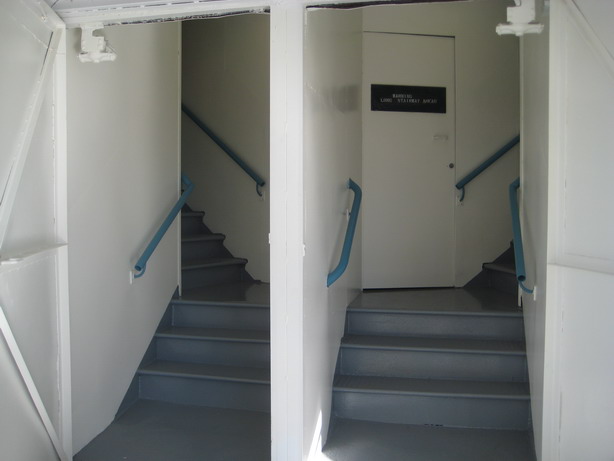
- View of the Hooker Telescope from the observation deck
The museum is a one-room building with a model of the stellar and solar observatories on Mount Wilson back around 1917, and so it does not show the CHARA array. However, it is interesting to see the model. There are also displays telling the history of Mount Wilson and the observatory, as well as tools and equipment used in the observatories. The visit to the museum is free of charge.
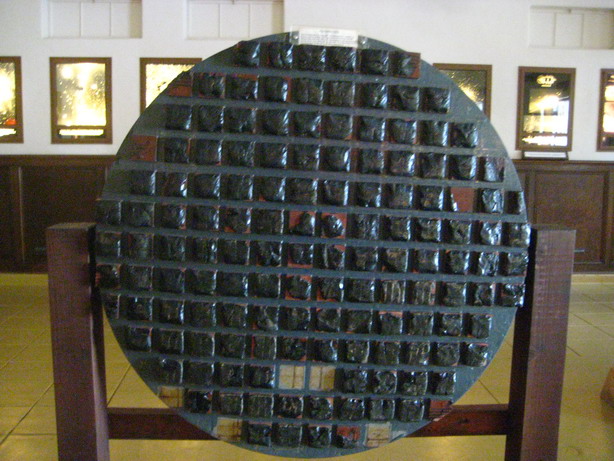
The 100” Hooker telescope and the 60” telescope are now used by groups, or rented out by universities, or JPL, when the need arises. They are located at one of the best locations in the world due to the “seeing” atmosphere on top of Mount Wilson. The inversion layer that traps much of the air above Los Angeles (keeping all that smog down) allows the air on top of the mountain to be very still, enabling the telescopes a better view of the stars. However, with today’s light pollution coming from the sprawling cities below, the telescopes just cannot see as far into space. Today, similar “seeing” atmospheres with better space penetration can be found in the coastal mountains in Hawaii and Chile. Despite this, these two telescopes still give us a great opportunity to see the night sky.
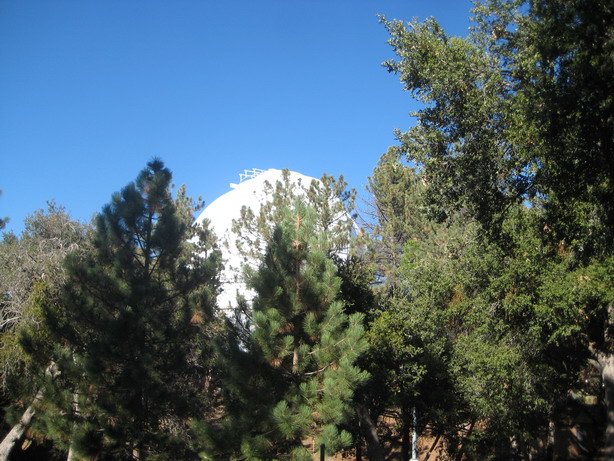
Tours are held from March 30 through November 30th, on weekends at 1:00pm, and last for about two hours. The grounds are open from 10:00am to 4:00pm, weather permitting. If visitors want to take a self-guided tour, they can do so, and there is a guide that can be downloaded ahead of time with brief descriptions of the various observatories atop Mount Wilson.
Guests visiting the Disneyland Resort for a number of days may be looking for things to do, especially since Disneyland has limited their park-hoppers to five days. I highly recommend a visit to Mount Wilson and the observatory located there. I also recommend packing a lunch, or getting sandwiches at the Cosmic Café, and continuing your visit at either Charleston or Chilao Flats, or the beautiful Buckhorn Campground.
The drive to the observatory is pretty straight, and will take around an hour and a half to two hours depending on traffic. (Click on the map below for a larger view)
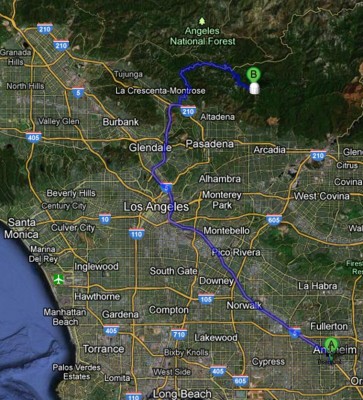
The turn-off to Mount Wilson Observatory and Cosmic Cafe is located at the Red Box Station.
I’m including some other pictures I took with my simple point and shoot camera.
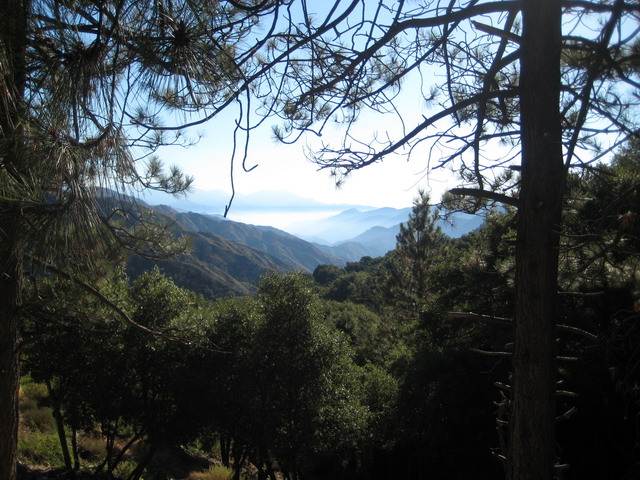
These pictures were taken as I drove to Charleston Flats picnic area, Chilao Flats campground, and Buckhorn Campground located about 6,500 ft high.
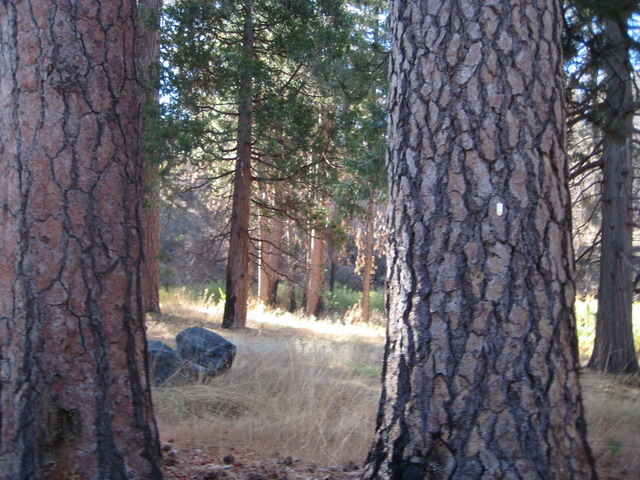
Flowers at Chilao Campground and a coyote walking through an empty campground…
Buckhorn campground is “greener” and there is a trail leading to a small waterfall.
Antennae on top of Mt. Wilson.
View of the mountains from the observatory.
The drive to the San Gabriel Mountains is relatively easy. I hope you get the opportunity to visit this Los Angeles treasure.
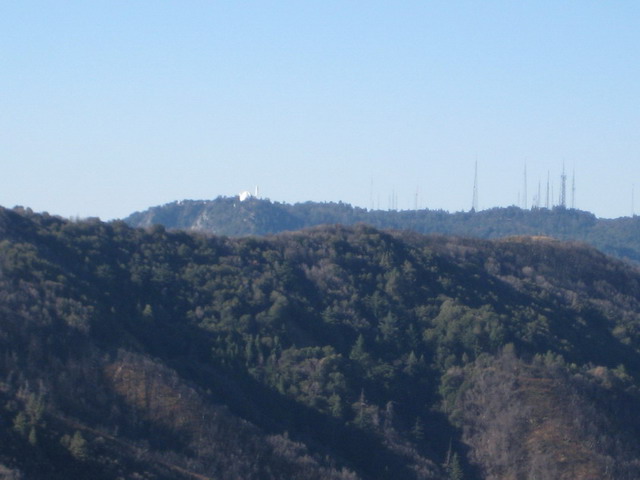
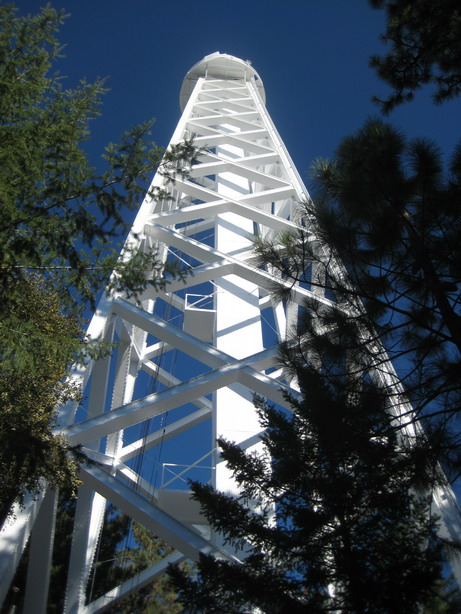
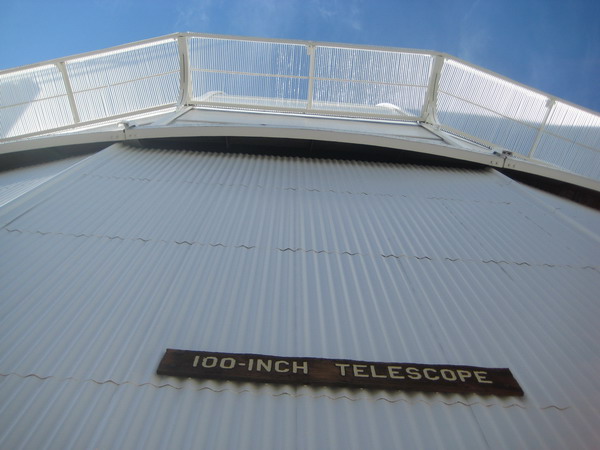
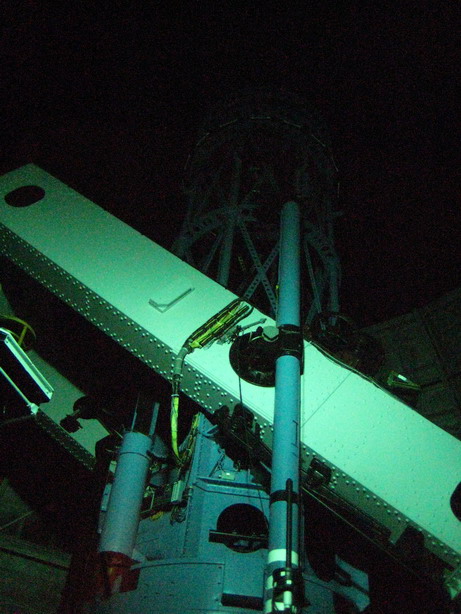
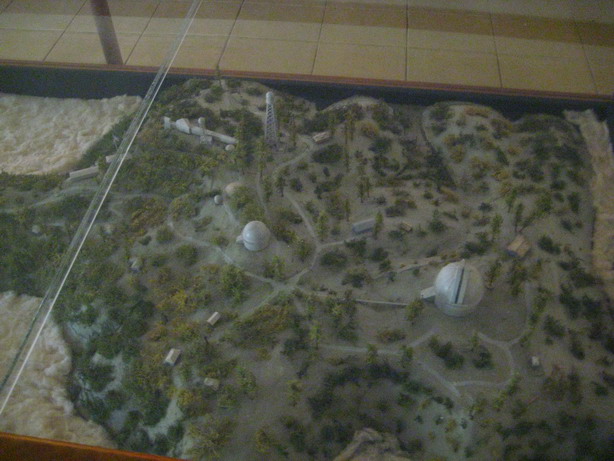
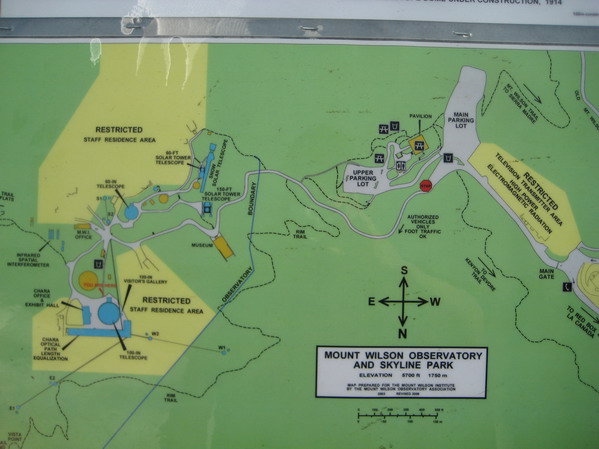
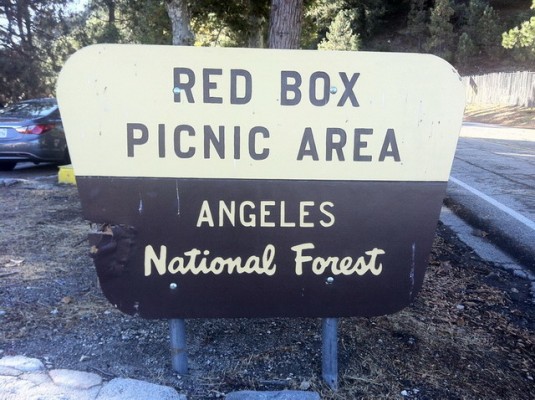
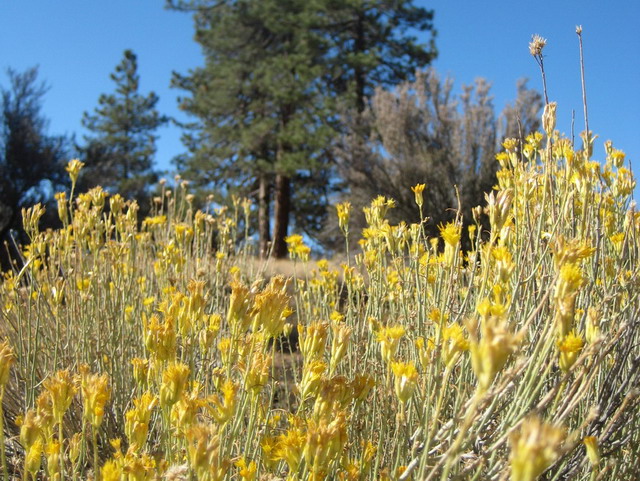
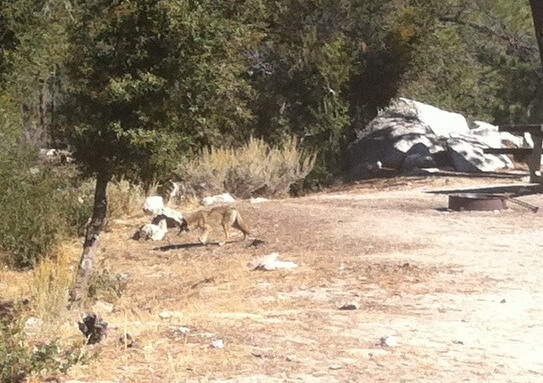
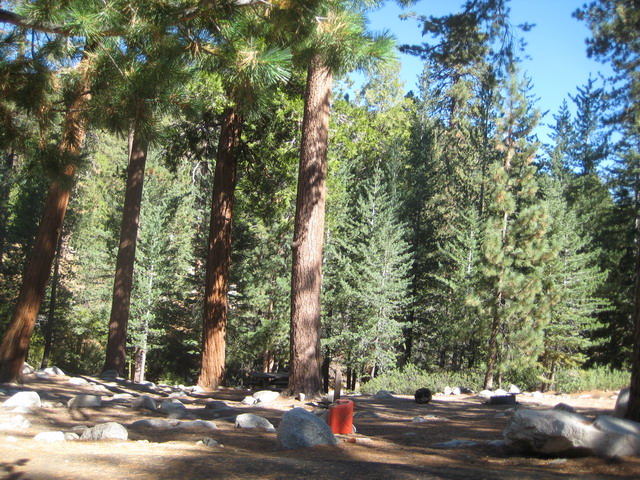
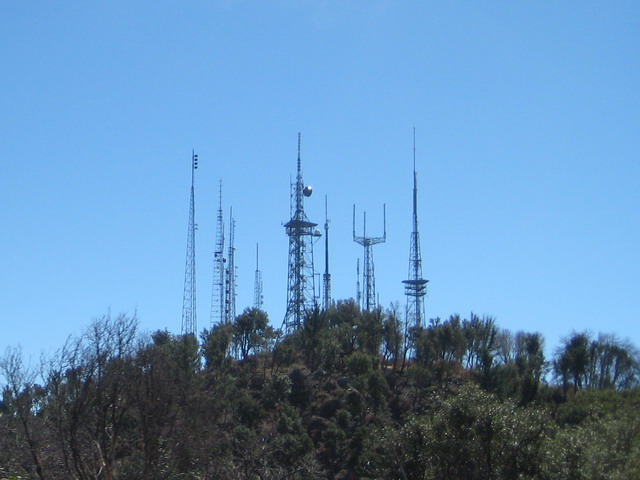
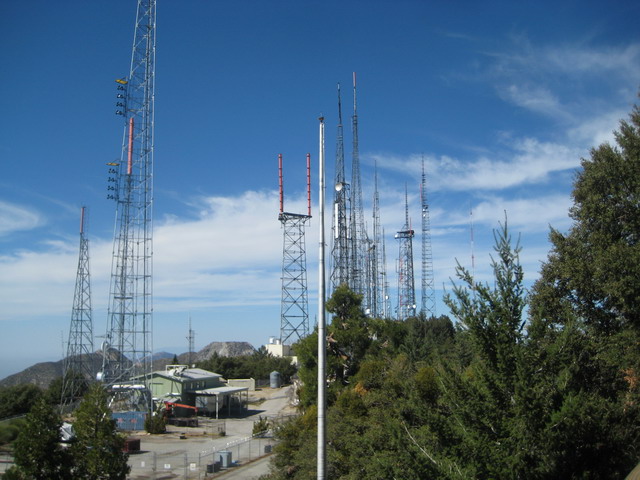
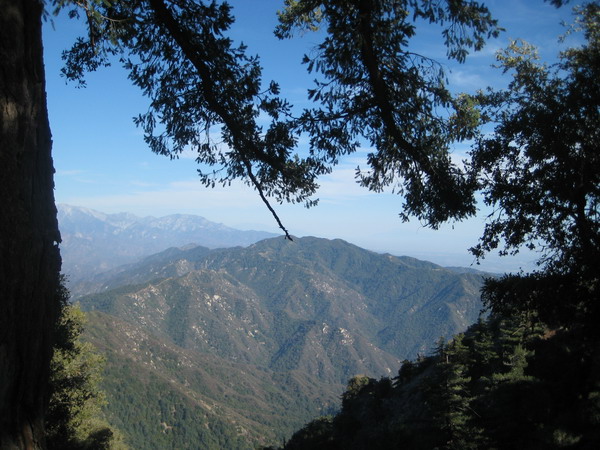
Leave a Reply